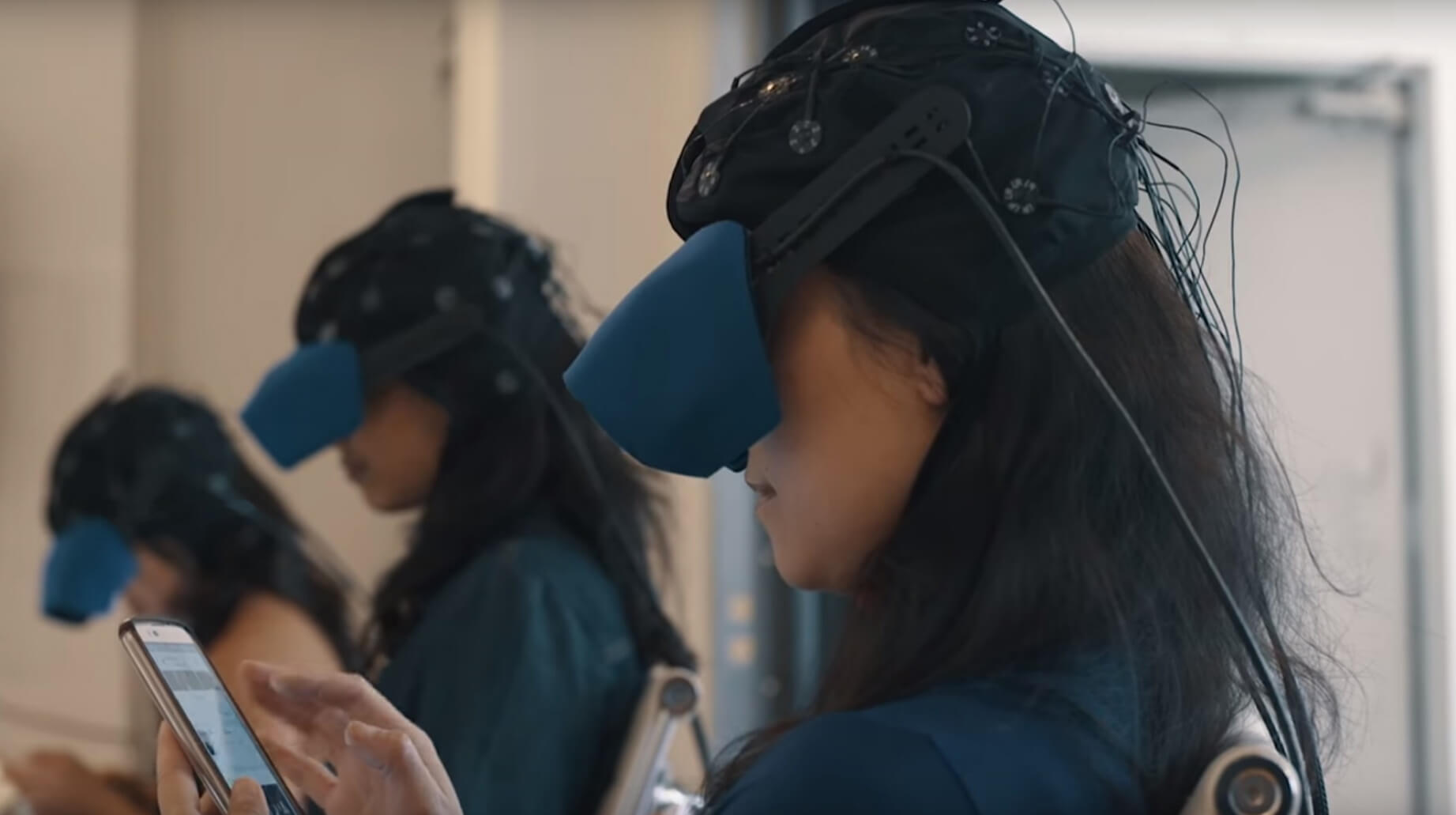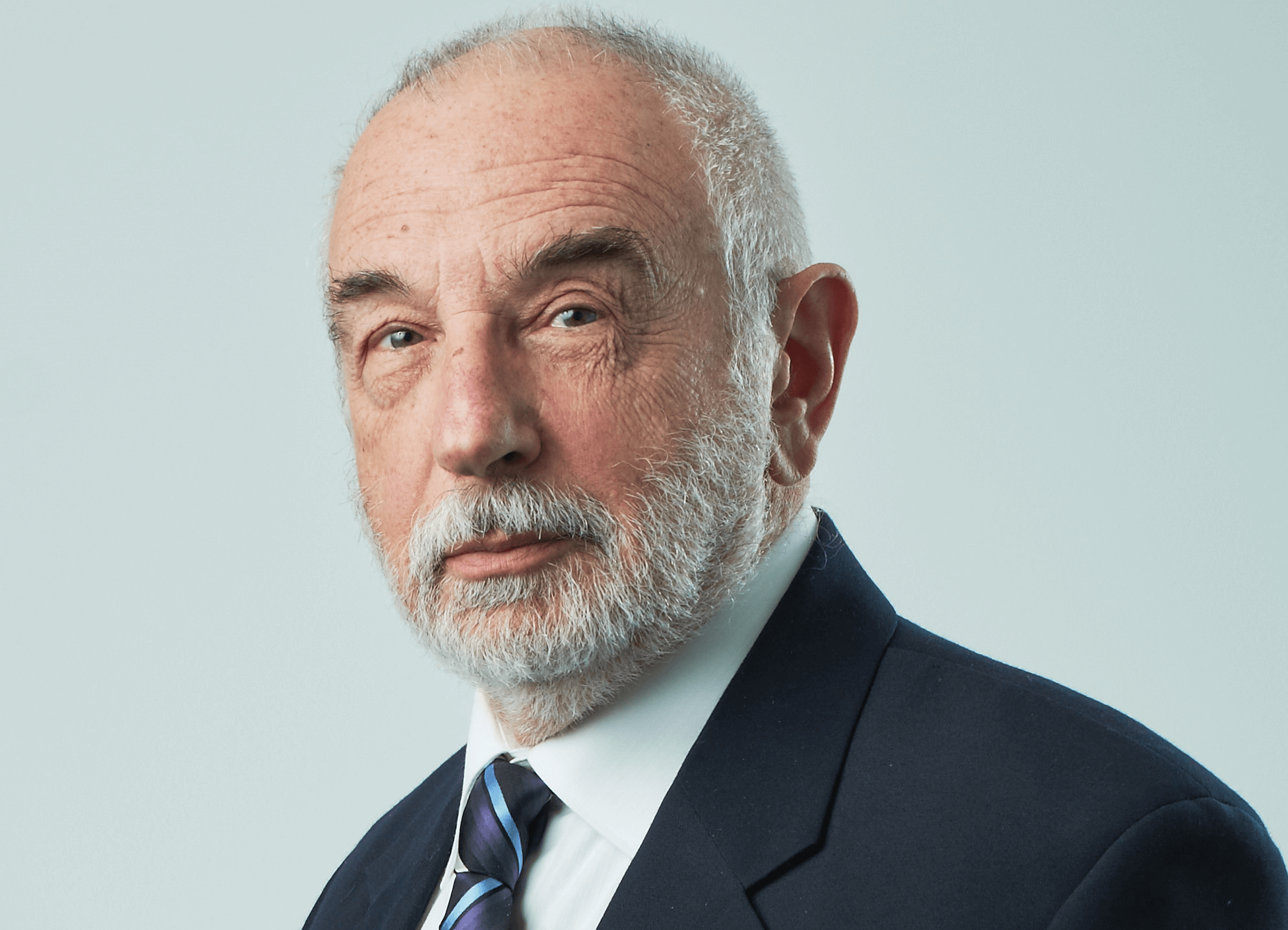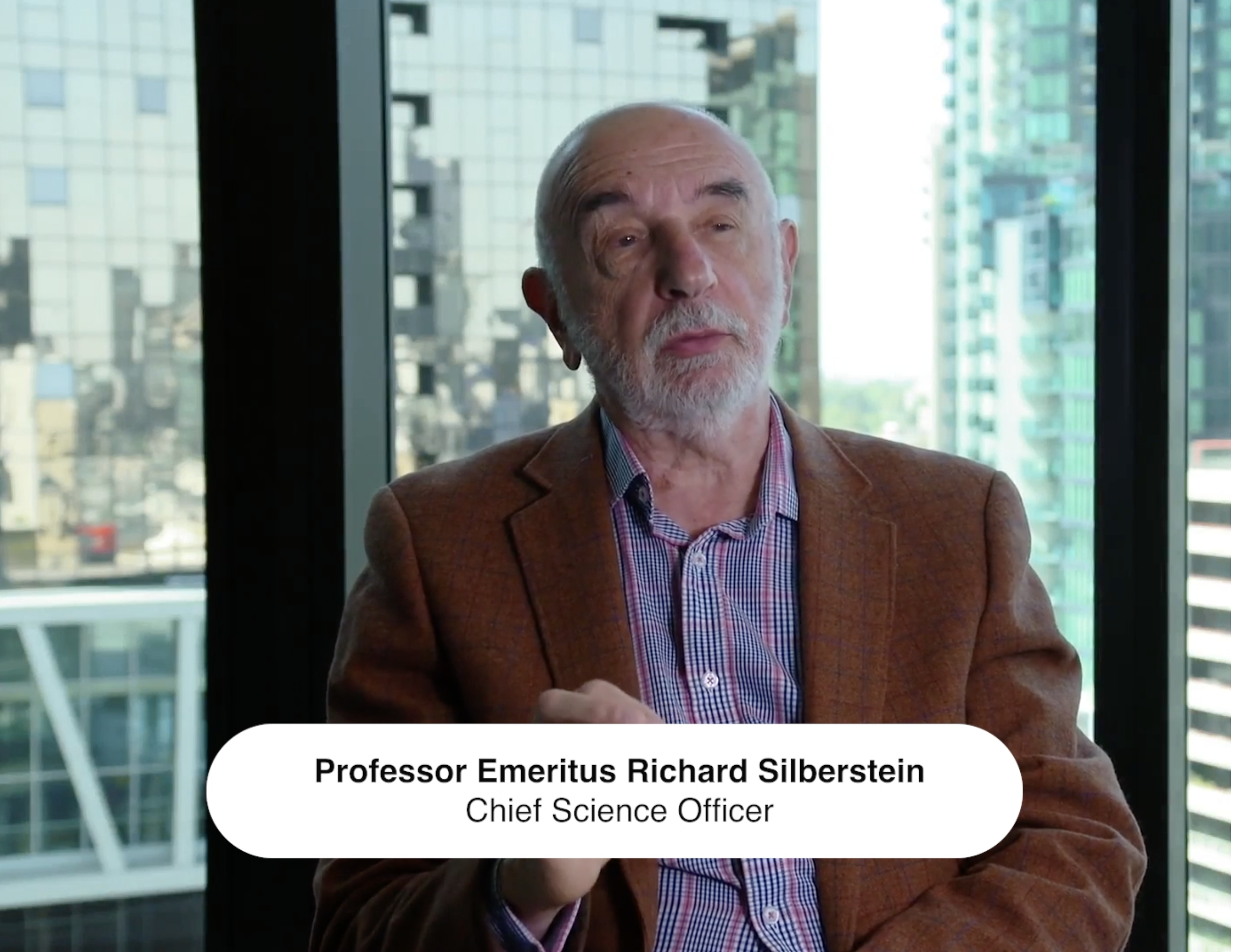Our Science & Technology


What is Steady State
Topography?
Topography?
Leading the Way:
Professor Emeritus Richard
Silberstein
Professor Emeritus Richard
Silberstein
Professor Emeritus Richard Silberstein is Neuro-
Insight’s founder, Board Chairman, Chief Scientist,
and originator of the Steady State Topography (SST)
methodology. He has spent 35+ years studying the
relationship between the brain’s electrical activity and
psychological processes. He is Emeritus Professor at
Swinburne University of Technology, one of the most
accomplished neuroscientists in the APAC region, the
first elected president of the NMSBA, and a recipient
of the Great Mind Award.
Insight’s founder, Board Chairman, Chief Scientist,
and originator of the Steady State Topography (SST)
methodology. He has spent 35+ years studying the
relationship between the brain’s electrical activity and
psychological processes. He is Emeritus Professor at
Swinburne University of Technology, one of the most
accomplished neuroscientists in the APAC region, the
first elected president of the NMSBA, and a recipient
of the Great Mind Award.

Leading the Way:
Professor Emeritus Richard
Silberstein
Professor Emeritus Richard
Silberstein
Professor Emeritus Richard Silberstein is Neuro-
Insight’s founder, Board Chairman, Chief Scientist,
and originator of the Steady State Topography (SST)
methodology. He has spent 35+ years studying the
relationship between the brain’s electrical activity and
psychological processes. He is Emeritus Professor at
Swinburne University of Technology, one of the most
accomplished neuroscientists in the APAC region, the
first elected president of the NMSBA, and a recipient
of the Great Mind Award.
Insight’s founder, Board Chairman, Chief Scientist,
and originator of the Steady State Topography (SST)
methodology. He has spent 35+ years studying the
relationship between the brain’s electrical activity and
psychological processes. He is Emeritus Professor at
Swinburne University of Technology, one of the most
accomplished neuroscientists in the APAC region, the
first elected president of the NMSBA, and a recipient
of the Great Mind Award.
Understanding Our Metrics
Understanding our metrics: Our decisions are based on
one thing and one thing only — long-term memory, not
to be confused with recall, but rather what is encoded
and enduring and often below conscious perception. In
addition to memory, we measure other areas of the
brain for a holistic understanding of the subconscious
response — these include: engagement, emotional
intensity, and lean-in/out. Click through each metric to learn more.
one thing and one thing only — long-term memory, not
to be confused with recall, but rather what is encoded
and enduring and often below conscious perception. In
addition to memory, we measure other areas of the
brain for a holistic understanding of the subconscious
response — these include: engagement, emotional
intensity, and lean-in/out. Click through each metric to learn more.
Memory
Relevance
Emotional Intensity
Lean in / out


Memory
What is it: Long-term memory is any information stored in the brain for over one hour and can last decades. We measure not what is already stored in memory, but what is being encoded at the moment.
Why we measure it: Memory (both conscious and subconscious), and not recall, is what the brain uses to inform decision-making.
What is the impact: Every in-market decision is the result of a memory about a brand created through an experience, event, or advertising. If it doesn’t go into memory, it is unlikely to impact behavior.
Why we measure it: Memory (both conscious and subconscious), and not recall, is what the brain uses to inform decision-making.
What is the impact: Every in-market decision is the result of a memory about a brand created through an experience, event, or advertising. If it doesn’t go into memory, it is unlikely to impact behavior.


Relevance
What is it: Relevance measures the personal significance of any stimulus — from ideas, locations, people, colors, and shapes — to an individual / group of individuals.
Why we measure it: Personal significance is the biggest driver of memory, and therefore behavior.
What is the impact: It is the true receptibility test for an idea with its target audience.
Why we measure it: Personal significance is the biggest driver of memory, and therefore behavior.
What is the impact: It is the true receptibility test for an idea with its target audience.


Emotional Intensity
What is it: Emotional intensity measures the strength of emotion experienced — not joyful nor sad but the extent of sadness or joy produced.
Why we measure it: It is the extent to which an individual is energized, captivated, or engrossed by the stimulus and plays an important role in activating memory encoding and endows memories with a unique essence or tone.
What is the impact: Emotional intensity adds measurement to the subjective, less concrete, fleeting feelings that play an important role in the desire for new products, what appeals about packaging, and the stories in advertising.
Why we measure it: It is the extent to which an individual is energized, captivated, or engrossed by the stimulus and plays an important role in activating memory encoding and endows memories with a unique essence or tone.
What is the impact: Emotional intensity adds measurement to the subjective, less concrete, fleeting feelings that play an important role in the desire for new products, what appeals about packaging, and the stories in advertising.


Lean-in / Lean-out
What is it: This measures the direction of emotional experience (emotional valence). Scientifically described as approach / withdrawal, this metric measures our propensity to lean toward or away from the stimulus.
Why we measure it: This metric has the highest correlation to self-reported data and is essential to understanding the effect of the narrative structure, audio-visual executions, and casting.
What is the impact: What draws us in can be as compelling as something that makes us want to distance ourselves — either in the right degree can influence memory encoding and indicate real behavior.
Why we measure it: This metric has the highest correlation to self-reported data and is essential to understanding the effect of the narrative structure, audio-visual executions, and casting.
What is the impact: What draws us in can be as compelling as something that makes us want to distance ourselves — either in the right degree can influence memory encoding and indicate real behavior.
SST is a validated neuromarketing technology.
Travel our timeline…
Can you measure memory?
2001
We proved that the speed of brain activity measured through SST is indicative of memory creation.
Does memory predict consumer behavior?
Can memory predict in-market sales?
Can memory inform predictive models?
2015-2017
We established the predictive power of SST™ to be an 86% correlation to in-market sales.
